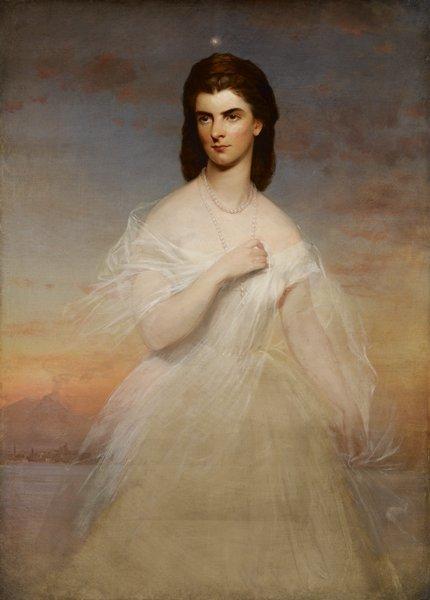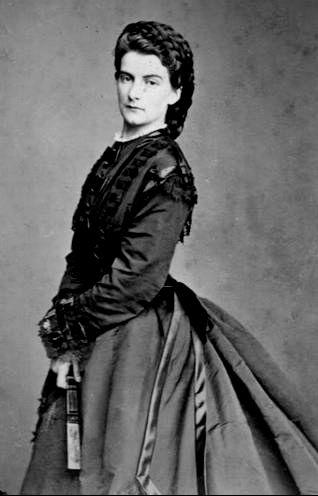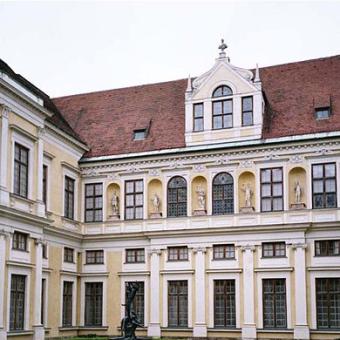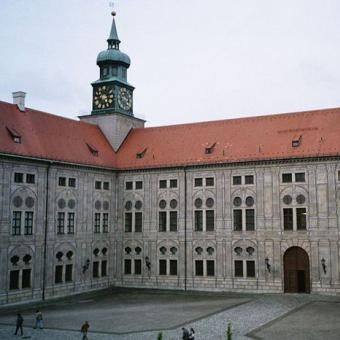THE EXCITING LIFE OF MARIE SOPHIE, SISI’S YOUNGEST SISTER
Maria Sophie fell in love with a Belgian count, Armand de Lawayss, and soon she gave birth to twins in 1862 but the little girls were taken away from her after the labour.
Read the first part of the story: SISI’S YOUNGEST SISTER
After losing her children, Mary was inconsolable and suffered terribly. She wanted to annul her marriage to her husband, with whom, except praying together, did not do anything in common. Count Lawayss made several attempts to get back his precious love, Marie Sophie, however, Maximilian II, King of Bavaria hired agents to prevent it. Finally, Marie, following her family’s advice, wrote her husband and made a confession. Francis, the (ex)king of Naples forgave her then soon he underwent a medical intervention.
Then for a while, Mary stayed with her family in Possenhofen, where she was visited by her sister, Empress Elisabeth. The Empress was said to give a kind and gorgeous gift to her sister, which was waiting for Marie in her home with her husband in Rome, where the royal couple lived after losing their kingdom. This present was a luxurious marital bed...
Marie Sophie (1860-61) by Franz Xaver Winterhalter

The Warrior Queen finally returned to her husband and on 24 December 1870 (which is also her sister, Empress Elisabeth’s birthday), after more than 10 years of marriage, she gave birth to a little girl, whose godmother became Empress Elisabeth. However, the little girl died on 28 March 1871, possibly due to the inadequate care which she had been given by her caregivers. She was only 3 months old. Marie had no more children.
Elisabeth and Marie had good relationship with each other. The sisters, whenever it was possible, met. After the death of Marie’s child, Marie Sophie hurried to Vienna to see Sisi then she left her husband permanently. Francis moved to a small palace near the Lake Stranberg, where he spent the rest of his life hidden under the pseudonym, Count De Castro. In 1894 he died from diabetes - Marie Sophie attended his funeral. (Photo below: Marie Sophie)

Maria Sophie travelled a lot and often met her sisters, Sisi and her younger sister, Mathilde. Mary, like Elisabeth, was an excellent horsewoman, and coped with horse breeding near Paris in Neuilly-sur-Seine, where she lived in Villa Hamilton. She loved going out and keeping a company. Unlike her older sister, she was fond of being in the centre. Marie Sophie was said to be able to preserve her natural beauty. She was courted by a lot of aristocrats, however, she disregarded them and was very much in the political life instead.
In World War I, the former Queen had to leave France and return to his native Bavaria, where she settled in Munich. During the Soviet Republic, she lived at Hotel Kaiserhof. The Revolution found her there, and the owner of the hotel tried to protect her from the dangers but Mary laughed and boldly said, "I will not go down to the basement. I want to see if today's revolutionaries can shoot better than in my time." (Translated from the book of Sigrid -Maria Grössing 137)


Marie spent her final years in Wittelsbach Palace, Munich, where she stayed at a small apartment with her nephew’s permission. Even that time, she was interested in politics, and sometimes hosted notable people ex-monarchs and aristocrats). However, that time she could not afford to subscribe political newspapers, which she was fond of. At her older age, she still nursed her grievances. An interview made by a reporter of a newspaper called Corriere della Sera she said: "The French Republic was much more noble to the Orleans than the Italian Kingdom to us. The way we were treated is a bad omen" (translated from Sigrid -Maria Grössing, 138). The interview was conducted in December 1924, a few weeks before her death but due to political reasons only some parts of it could be published that time).
Marie Sophie, the last Queen of Naples, was said to be a beautiful woman while ageing, what is more, her appearance and movements were royal. She died on 18 January 1925, a few days before her 84th birthday. After her death, her mortal remains lived nearly as an “active life” as she had. At first, she was buried in Munich then her body was taken to Rome, where she was placed next to her husband and her daughter, but this was not her final resting place. The Warrior Queen travelled one more time: In 1984, the last ruler couple of the Kingdom of the Two Sicilies was taken to Paris, where they were reburied in the Bourbons Pantheon.
Magyarul: MÁRIA ZSÓFIA, AZ EXKIRÁLYNÉ
Work Cited: Sigrid-Maria Grössing Sisi családi körben. (112-138) Gabo Kiadó, 2013



